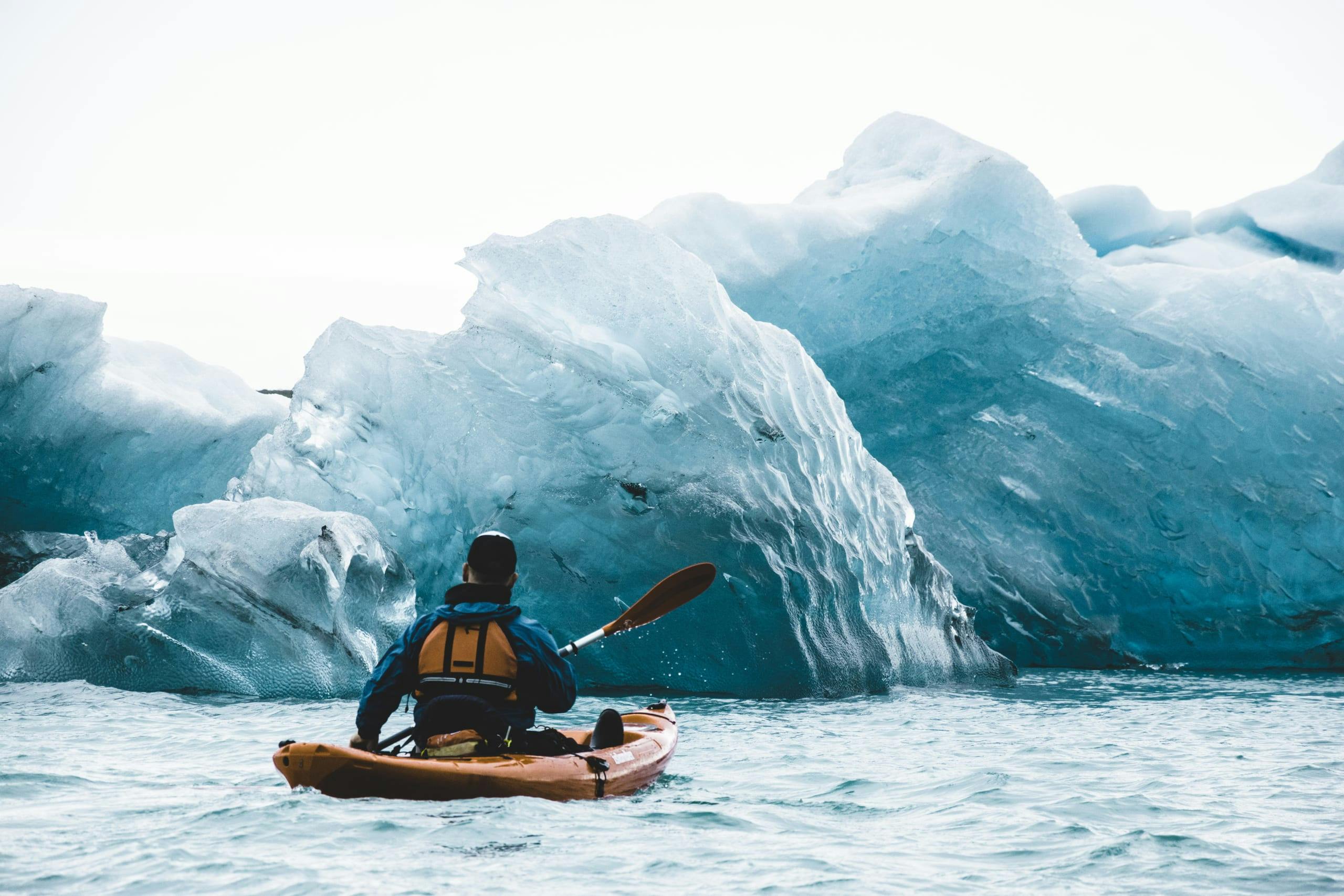- Experiences >
- Destinations >
- Gear >
- About Us >

Polar Expeditions
Undertaking a polar expedition is a bold commitment requiring significant time, logistical planning, money and a strong desire to challenge yourself against nature and the elements. Travelling to the polar regions of the Arctic and Antarctic can be a once-in-a-lifetime experience, and achieving a goal in these regions – whether it be climbing a peak, skiing to the pole, sailing on an expedition route, discovering historic explorer huts and structures, or seeking out remote penguin colonies – these are adventures you will share and cherish for the rest of your life.
Even with the advent of technology for communications and weather forecasting, and with modern clothing materials, the Polar Regions can be harsh environments. This is part of the reason why they are appealing; the unknown, the remoteness and the challenge.
Getting to Antarctica involves committing to either a ship or yacht journey from a relatively close port (3-10 days) such as Ushuaia, Invercargill, Cape Town, Hobart or Stanley. Alternatively flying from places like Punta Arenas to King George Island or Union Glacier camp puts you directly into the thick of Antarctica. From here you can climb Vinson Massif (the highest mountain in Antarctica), fly to the South Pole, or explore remote Emperor Penguin colonies that very few people have ever seen.
The Arctic is similarly serviced from predominantly Norway or Canada – particularly if you want to fly to the North Pole. You can even board a sightseeing flight from places like Berlin where you will fly over the North Pole and return within a few hours. Longyearbyen is a very popular (and beautiful) departure point for Arctic adventures, and if you want to experience the Arctic on the ground without having to ski or haul gear, Barneo Ice Station (about 100km’s from the North Pole) is an incredible experience. From there you can fly by MI-8 helicopter directly to the Pole in 20-40 minutes. Equally as exciting and adventurous is taking a journey from Murmansk to the North Pole on board the 50 Years of Victory – the world’s largest and most powerful nuclear icebreaker. You can even balloon over the Pole when you get there!
Experience Types
Polar Expeditions
- All Experiences
- *Gift Voucher*
- 4WD Tours
- Abseiling
- Adventure Journeys
- Aerobatic Flights
- Alpine Hiking
- Ballooning
- Bike Hire
- Bike Tours
- Boat Charters
- Bridge Climb
- Bucket-List Adventures
- Bungy Jumping
- Camel Riding
- Camping
- Canoeing
- Canyoning
- Cars/Go Kart
- Caving
- Courses
- Cruise
- Diving
- Dolphins/ Dolphin Swim
- Eco Tours
- Expedition Cruising
- Fishing
- Fly Board
- Forest / Rainforest
- Geothermal Parks
- Glacier Hiking
- Glowworm Caves
- Hang Gliding
- Heli-skiing & Heli-boarding
- Hiking & Trekking
- Horse Riding
- Hovercraft
- Indigenous & Cultural
- Island Hopping
- Jet Boating
- Jet Ski
- Kayaking
- Kite Surfing
- Live Aboard Diving
- Luge
- Marine Parks / Reserve
- Motorbike Tours
- Motorsports
- Mountain Biking
- Mountaineering and Climbing
- National Parks
- Nature
- Outback
- Packrafting
- Paddle Board
- Paragliding
- Parasailing
- Polar Expeditions
- Quad Biking
- Rafting
- River Cruises
- Rock Climbing
- Safari
- Sailing
- Sand Boarding
- Scenic Flights
- Scenic Tour / Sightseeing
- Self Drive
- Skiing & Snowboarding
- Skydiving
- Skydiving - Indoor
- Skyrail Gondola
- Snorkelling
- Snowshoeing
- Surfing
- Swimming
- Swing
- Training Courses
- Try-It Adventures
- Virtual Experience
- Volcano Tours
- Walking Tours
- Water Sports
- Whale Watching
- Wildlife and Birdwatching
- Ziplining
- Zoos / Wildlife Parks
Destinations
All Destinations
- All Destinations
- Africa
- - Kenya
- - South Africa
- - Tanzania
- Antarctica
- Argentina
- Australia
- - Adelaide
- - Airlie Beach
- - Blue Mountains
- - Brisbane
- - Cairns
- - Gold Coast
- - Melbourne
- - Noosa
- - Port Stephens
- - Rainbow Beach
- - Sydney
- Bhutan
- Canada
- - Revelstoke
- Chile
- Colombia
- Ecuador
- Fiji
- France
- Guatemala
- Iceland
- India
- Indonesia
- - Bali
- - - Ubud
- Japan
- Mexico
- Morocco
- Nepal
- - Kathmandu
- New Zealand
- - Abel Tasman
- - Auckland
- - Bay of Islands
- - Cardrona
- - Charleston
- - Christchurch
- - Coromandel
- - Fox Glacier
- - Franz Josef
- - Greymouth
- - Kaikoura
- - Motueka
- - Mount Cook
- - Paihia
- - Queenstown
- - Raglan
- - Rotorua
- - Taihape
- - Taupō
- - Tauranga
- - Te Anau and Milford Sound
- - Tongariro National Park
- - Turangi
- - Twizel
- - Waiheke Island
- - Waitomo
- - Wanaka
- - Wellington
- Nicaragua
- Pacific
- Pakistan
- Patagonia
- Peru
- Philippines
- Portugal
- Russia
- Sri Lanka
- - Colombo
- United States of America
Durations
All Durations
- All Durations
- Under Full-Day
- Full-Day
- Multi-Day
Booking Type
All Booking Types
- All Booking Types
- Instant Booking
- Enquiry Booking
Finding your next adventure...